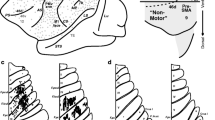Abstract
Although considerable progress has been made in developing models of cerebellar function in sensorimotor control, the exact nature of the basic operations performed by the cerebellum remain elusive. Several major theories have emerged these last decades. According to the hypothesis of Marr and Albus, the climbing fiber input carries an error signal weakening the strength of a subset of parallel fibers/Purkinje neurons synapses in the cerebellar cortex. Cerebellar circuits would gain the control of movement through trial and error. The hypothesis of internal models emulating movements is currently highly cited. There is a general agreement that (1) the central nervous system has to cope with an intrinsic time delay of sensory feedback related to motor activities and (2) estimations of future motor states are essential to perform fast and accurate movements. According to this second theory, cerebellar dysmetria, one of the cardinal cerebellar deficits, would result from a distorted predictive control. A third popular theory relates to the inverse models that would be stored in the cerebellum. Acquisition of a motor act would require forward models, and the acquisition process itself would generate an inverse model to allow an unconscious coordinated movement. Recently, an international panel of experts from various disciplines discussed the prevailing opinions in a consensus statement and tried to extract their clinical relevance in terms of pathogenesis of the clinical symptoms. Although a consensus is still not reached, the prevailing opinions provide a sound framework to conduct novel studies and try to discover the secrets of cerebellar circuits.
Similar content being viewed by others
References
Manto M, Bower JM, Conforto AB, Delgado-García JM, da Guarda SN, Gerwig M, Habas C, Hagura N, Ivry RB, Mariën P, Molinari M, Naito E, Nowak DA, Oulad Ben Taib N, Pelisson D, Tesche CD, Tilikete C, Timmann D. Consensus paper: roles of the cerebellum in motor control—the diversity of ideas on cerebellar involvement in movement. Cerebellum. 2012;11(2):457–87.
Marr DA. A theory of cerebellar cortex. J Physiol (Lond). 1969;202:437–70.
Albus JS. A theory of cerebellar function. Math Biosci. 1971;10:25–61.
Wolpert DM, Miall RC, Kawato M. Internal models in the cerebellum. Trends Cogn Sci. 1998;2:338–47.
Roitman AV, Pasalar S, Johnson MT, Ebner TJ. Position, direction of movement, and speed tuning of cerebellar Purkinje cells during circular manual tracking in monkey. J Neurosci. 2005;25(40):9244–57.
Ebner TJ. Cerebellum and internal models. In: Manto M, Gruol D, Schmahmann JD, Koibuchi N, Rossi F, editors. Handbook of cerebellum and cerebellar disorders. New York: Springer; 2013. p. 1281–95.
Leigh RJ, Zee DS. The neurology of eye movements. Oxford: Oxford University Press; 2006.
Ackermann H, Mathiak K, Riecker A. The contribution of the cerebellum to speech production and speech perception: clinical and functional imaging data. Cerebellum. 2007;6:202–13.
Nowak DA, Hermsdörfer J, Marquardt C, Fuchs HH. Grip and load force coupling during discrete vertical movements in cerebellar atrophy. Exp Brain Res. 2002;145:28–39.
Fellows SJ, Ernst J, Schwarz M, Topper R, Noth J. Precision grip in cerebellar disorders in man. Clin Neurophysiol. 2001;112:1793–802.
Bastian AJ, Martin TA, Keating JG, Thach WT. Cerebellar ataxia: abnormal control of interaction torques across multiple joints. J Neurophysiol. 1996;76(1):492–509.
Manto M. Mechanisms of human cerebellar dysmetria: experimental evidence and current conceptual bases. J Neuroeng Rehabil. 2009;13:6–10.
Acknowledgments
We are indebted to all the contributors of the first consensus paper published in The Cerebellum. Mario Manto is supported by the FNRS-Belgium.
Conflict of Interest
We declare that we have no conflict of interest.
Author information
Authors and Affiliations
Corresponding author
Rights and permissions
About this article
Cite this article
Manto, M., Oulad Ben Taib, N. The Contributions of the Cerebellum in Sensorimotor Control: What Are the Prevailing Opinions Which Will Guide Forthcoming Studies?. Cerebellum 12, 313–315 (2013). https://doi.org/10.1007/s12311-013-0449-z
Published:
Issue Date:
DOI: https://doi.org/10.1007/s12311-013-0449-z




